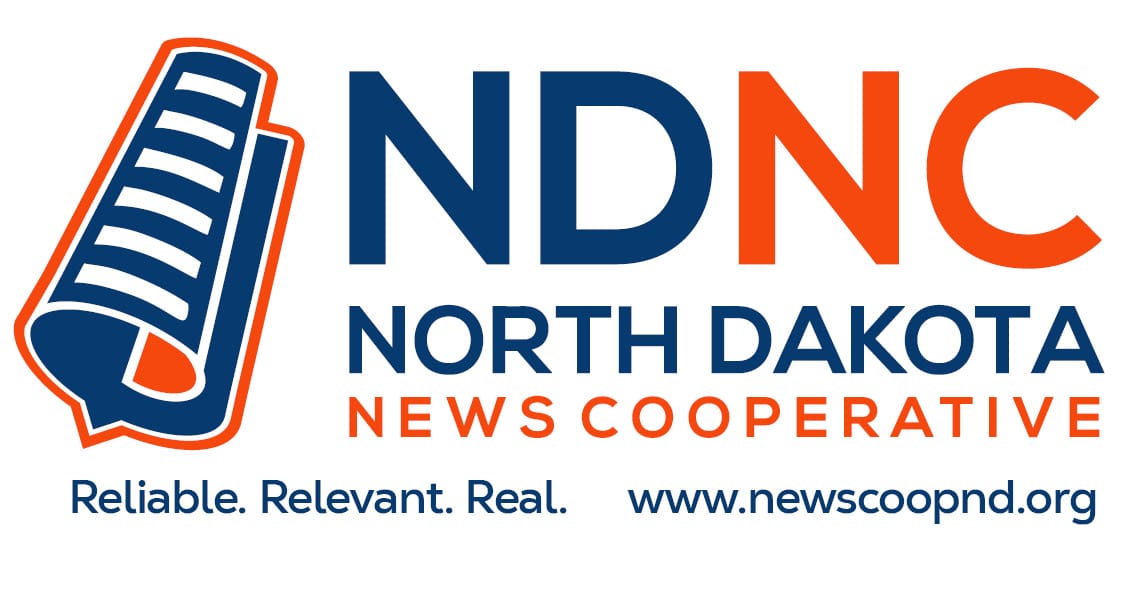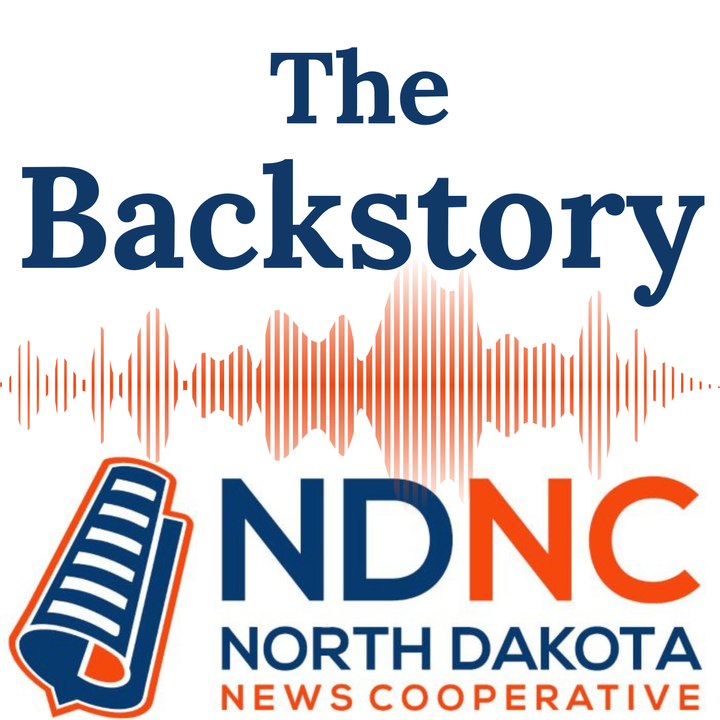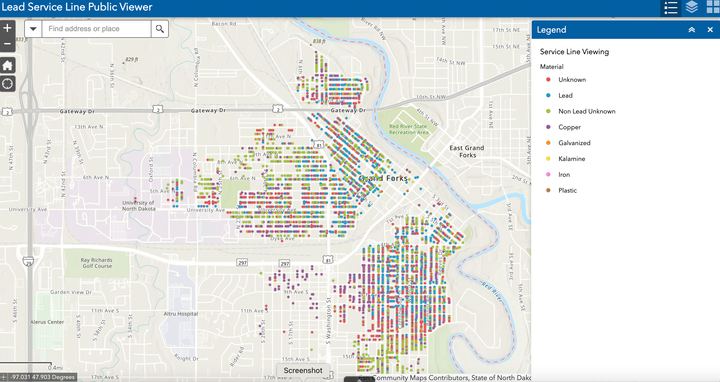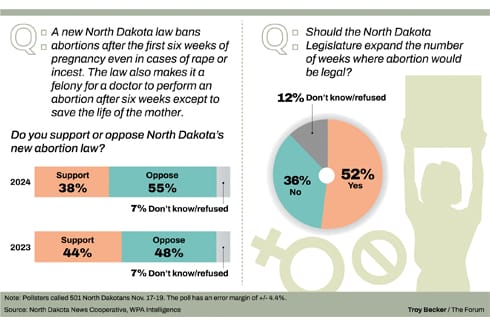Proposed VA staffing cuts have local veterans worried
Current excellent care could erode, they say
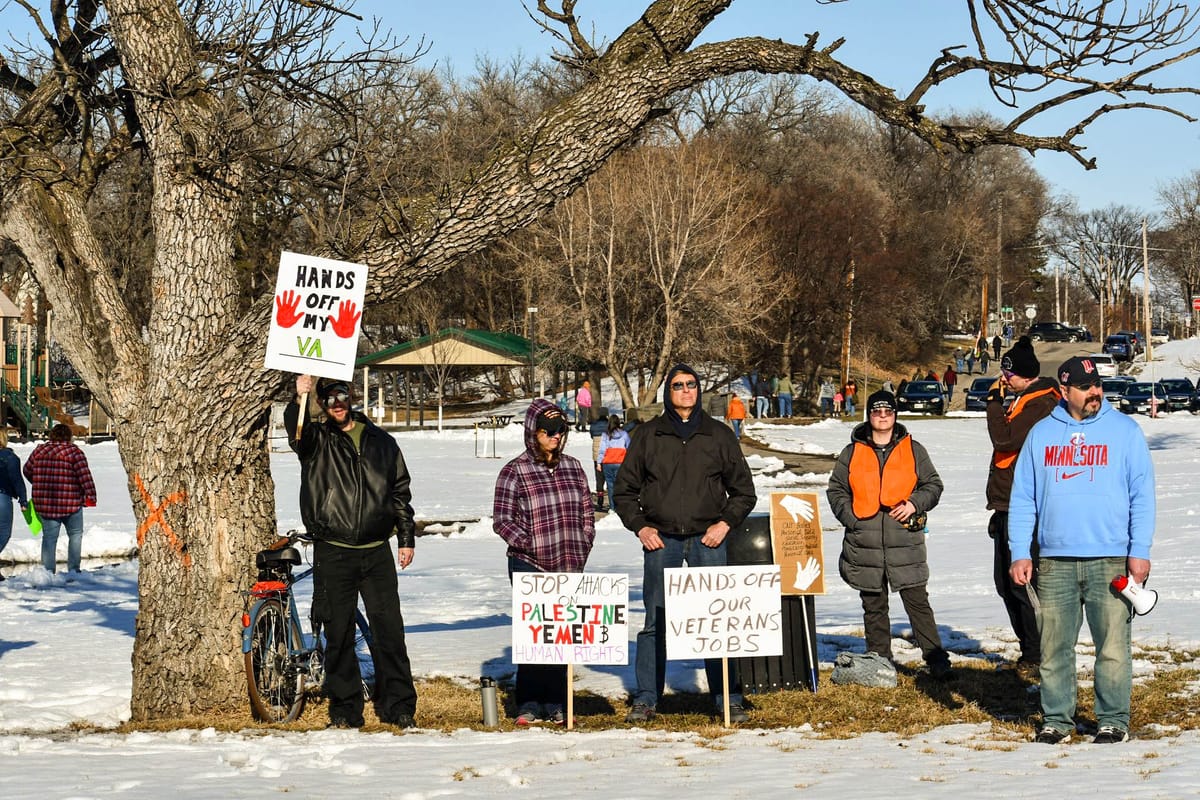
Expected cuts of between 70,000 to over 80,000 workers from U.S. Department of Veterans Affairs to bring staffing down to 2019 levels by the end of August have some North Dakota veterans concerned that care could erode.
The Associated Press reported on the cuts on March 5 after obtaining an internal memo that detailed 83,000 potential VA positions to eliminate.
In a video statement later that day, VA Secretary Doug Collins said the department is expected to cut around 15% of staff, or about 72,000 positions. Collins said the department can reduce its workforce without impacting veteran health care or benefits.
A primary concern of many veterans is that the loss of support staff or efforts to push more veterans to community care could significantly increase wait times and reduce the quality of care.
Most said the care under the VA now is excellent and doctors, nurses and other staff under the VA system are better attuned to their circumstances.
VA expansion led to more coverage
The VA expanded during the Biden administration after the 2022 PACT Act covered veterans impacted by burn pits, Agent Orange and other toxic substances during their duty.
Howard Tweeten of Bismarck said the VA wouldn’t have covered his health care without the PACT Act because family earnings were too high for him to qualify. In recent years, he’s experienced heart trouble and has been using the VA since the expansion covered him.
Tweeten served in the U.S. Army as a combat photographer between 1969 and 1971 primarily near the Demilitarized Zone separating North and South Korea.
Under the PACT Act, the VA presumes anyone stationed in a unit along the DMZ who served between 1967 and 1971 was exposed to Agent Orange used to reduce vegetation in the zone to more easily detect North Korean infiltrations.
“They sprayed Agent Orange on us in Korea too, but they’d never admitted it (before the PACT Act),” Tweeten said. “So they finally admitted it and got the PACT Act through, so I did qualify.”
One concern or Tweeten and others is that wait times could increase, pushing veterans to community care.
Current wait times for most care at Bismarck Veterans Clinic and Fargo Veterans Medical Center are minimal compared to community care. Under law the VA is required to publish average waiting time data online.
For example, a cardiology appointment can be made four to eight days out at either the Bismarck or Fargo facility. For community-based care, the average wait is around 26 days, according to national data.
For mental health appointments, wait times average three to eight days at the main North Dakota facilities. Nationally, 69 percent of psychologists reported their wait times at three months or longer, according to a 2023 survey from the American Psychological Association.
“They’ve been great,” Tweeten said of his care at the VA in North Dakota. “They keep track of me, they text me and make sure I know I have to be here or I have to be there.”
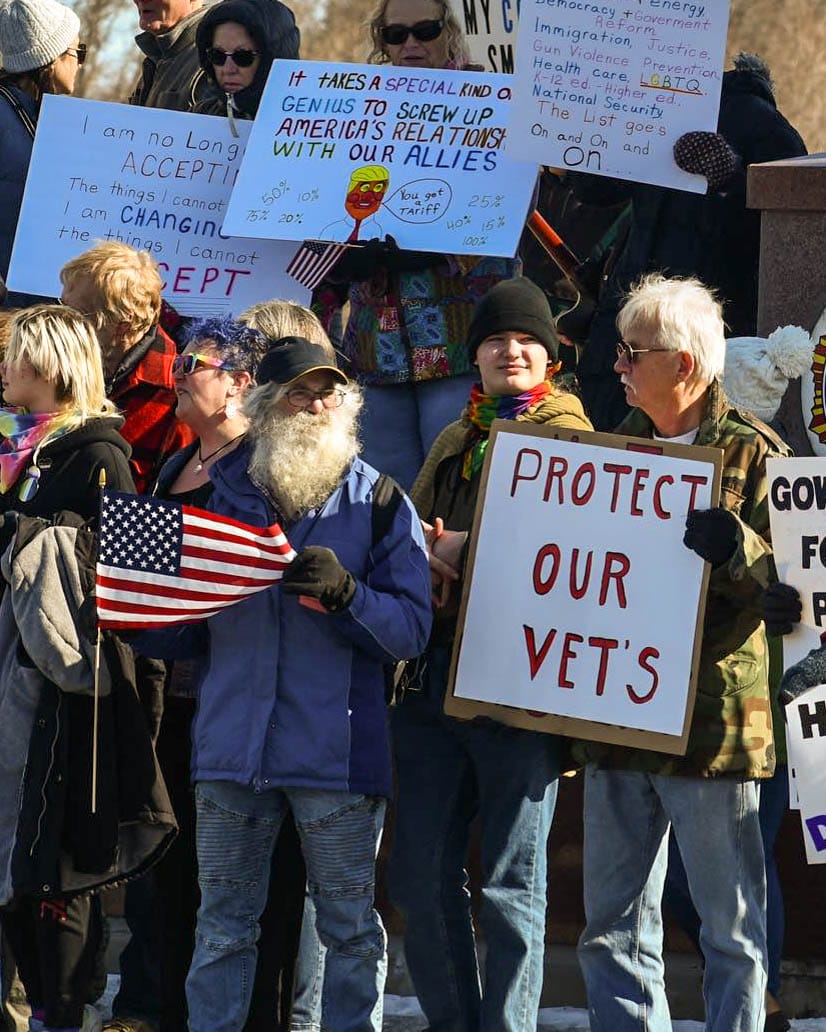
In 2024, the VA had its highest-ever service levels, with over 9 million veterans enrolled, according to agency data.
VA press secretary Pete Kasperowicz said those levels are steady and only slightly higher than the 9.09 million veterans enrolled in 2014.
"But more funding and higher staff numbers hasn’t automatically led to better service for Veterans," Kasperowicz said.
While the Biden administration increased VA staff by over 52,000 and the budget by $89 billion, waiting times increased in several areas during that expansion.
Kasperowicz provided data showing wait times for primary care, mental health care and specialty care all rose during the period from 2021 through 2024 and that disability benefits claims also increased during the Biden administration.
"[The] VA is engaged in a deliberative process to find ways to improve care and benefits for veterans without cutting care and benefits for Veterans. Meanwhile, all VA mission-critical positions are exempt from cuts, and hiring continues for
more than 300,000 essential positions," Kasperowicz said.
Rick Pinnick, currently living in Moorhead, served in the Air Force in 1972 and 1973, mostly operating out of U-Tapao Air Base where B-52’s flew out of. He later served with the North Dakota Army National Guard.
He suffers from COPD and was also diagnosed with multiple myeloma as a result of Agent Orange exposure during his time in Thailand, which at one point required costly weekly transfusions. He’s now also covered with 100% disability by the VA due to the passage of the PACT Act he said.
Pinnick is concerned that staffing cuts may reduce the number of facilities available in the region, increasing the distances veterans have to go for specialty care. He’s also worried about care eroding to levels they were a decade ago, when he didn’t have a very good perception of the VA.
“It’s counter to everything I knew a few years ago about the VA. These folks are just unbelievable,” he said, talking about how on his initial visit he was shown around the facility by a nurse using up her own break time.
Pinnick also has concerns that the national suicide hotline for veterans after hearing about changes to VA telehealth. He’s lost four veteran buddies to suicide, he said.
“That’s my biggest concern, that these guys have fallen through the cracks, and there are more cracks coming,” Pinnick said.
Staffing shortages could worsen
Marine Corps veteran Keli Berglund, mayor of Lincoln near Bismarck, and a former state commander for Disabled American Veterans from 2019-2021 said there’s a shortage of staff already within the VA.
“It’s absolutely heart-wrenching,” Berglund said of the prospects for staff cuts.
“I assume it would be more of the administrative staff and not doctors and primary care, but those are the people that schedule and do the work behind the scenes, and we cannot lose them,” she said.
According to a VA Office of the Inspector General report on staffing from 2024, of 139 facilities surveyed,137 reported at least one occupational staffing shortage. A total of 86 percent reported severe shortages for medical officers and 82 percent reported severe shortages for nurses.
During his first week in office, President Donald Trump fired inspector generals at 17 federal agencies including at the VA and the Department of Defense.
Army National Guard veteran Logan Heinrich of Fargo, who sustained injuries and hearing loss while serving in Iraq from 2003 to 2005, said the VA is already understaffed as it is.
“With all the potential staffing cuts, all it really means is that your quality of care may be great when you get seen, but how often are they going to actually have the time to take care of their veterans,” he said.
Heinrich has been appealing a VA decision not to treat his hearing loss since he returned from Iraq, with the American Legion helping with his appeal. He said any staffing cuts would likely make that appeal drag on longer.
“For people like me who were hoping for an appeal to finally go through, that’s just a lost cause now,” Heinrich said.
Heinrich also said veterans needing to fill prescriptions could have delays if there are major staff cuts, adding that he currently had to be diligent about getting refills since it can take two to three weeks to fill.
Potential loss of veteran-focused care
Eight-year Air Force veteran Dave Kelsen who joined in 1978, was formerly stationed in Alabama and Oklahoma and is now living in Fargo. Kelsen said the critical staffing shortages are already a problem and could be compounded by reducing the workforce at the VA.
He suffers from emphysema and said he’s been “exceptionally happy” with the care he now receives and worries that veterans being pushed to community care would increase wait times and reduce care.
“We’ve been lucky, but there’s a hell of a lot of veterans out there who haven’t been that lucky, and they can’t have the kind of waits and the kind of bullshit, sorry, that these guys would force on them with community care,” Kelsen said.
Kayla Williams, an Army veteran who served as an Arabic linguist from 2000-2005 and during the 2003 Iraq war, is now a senior policy advisor to progressive veterans organization VetVotes.
“I don’t see how you could cut that many positions and continue to provide the same level of care that you’re providing now,” Williams said of the prospective staffing cuts.
The VA disputes that narrative.
"We’re not talking about cutting doctors, nurses or claims processors. We’re talking about reducing bureaucracy and inefficiencies that are getting in the way of customer convenience and service to Veterans," Kasperowicz said.
Williams said wait times would only increase if those cuts go forward. She detailed how it takes three months currently to get a mental health appointment at the VA facility closest to her in Maryland.
“There’s no way you can have fewer providers and cut wait time,” Williams said.
Pushing more veterans to community-based care would also be problematic, she said, since many don’t have experience serving veterans and aren’t using evidence-based practices that have been developed by VA research programs to treat veterans with PTSD and other trauma.
“When I go to community providers, many have not even heard of military sexual trauma, much less how to screen for it, or are able to offer trauma-informed care to veterans who may have a history of that kind of trauma,” Williams said. “Forcing us into a different sector of care is not going to do us any favors.”
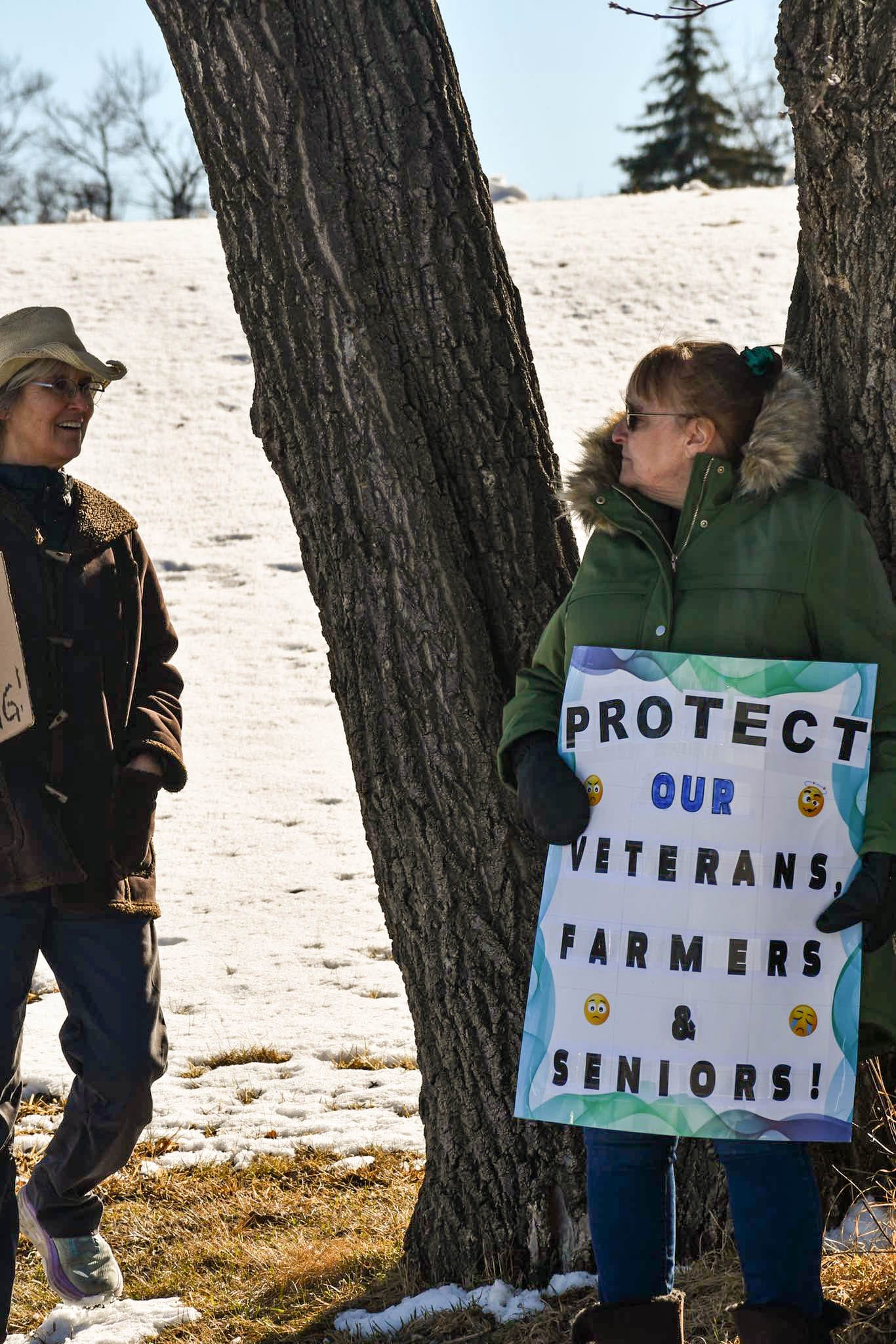

The North Dakota News Cooperative is a nonprofit news organization providing reliable and independent reporting on issues and events that impact the lives of North Dakotans. The organization increases the public’s access to quality journalism and advances news literacy across the state. For more information about NDNC or to make a charitable contribution, please visit newscoopnd.org. Send comments, suggestions or tips to michael@newscoopnd.org. Follow us on Twitter: https://twitter.com/NDNewsCoop.
